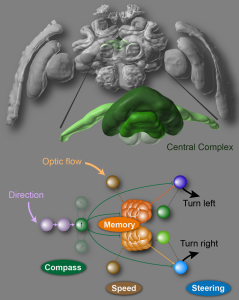The central complex of the bee brain as neural substrate for path integration
Stanley Heinze
Department of Biology, Lund University, Sweden
Path integration is a navigation strategy that allows a wide range of animals to return to a point of origin in a straight line after a convoluted trip. To achieve this, they have to monitor directional changes during the outbound route as well as the distance covered. While many animals use different internal and external cues to do this, vision is key in bees. These insects use optic flow to measure distance combined with an internal compass based on skylight cues. As these sensory cues can be easily controlled experimentally, the mechanisms of path integration in bees have been studied behaviorally for decades. More recently, we have begun to unravel the neural underpinnings of bee path integration as well. The central complex, a highly conserved region of the insect brain, plays an essential role for all aspects of path integration. Firstly, optic flow based speed neurons and polarized light based compass neurons converge in the central complex. Secondly, a set of neurons postsynaptic to the speed neurons is suited to combine compass and speed information, and, theoretically, to also serve as memory units. Finally, the uniquely ordered neuroarchitecture of the central complex enables another set of cells to compare the compass signal with the accumulated memory to drive steering decisions that guide the bee back to its nest. More generally, the circuit proposed compares a current heading (compass orientation) with a desired heading (home vector) and compensated any mismatch by steering – a process underlying most oriented behaviors across animals.









You must be logged in to post a comment.